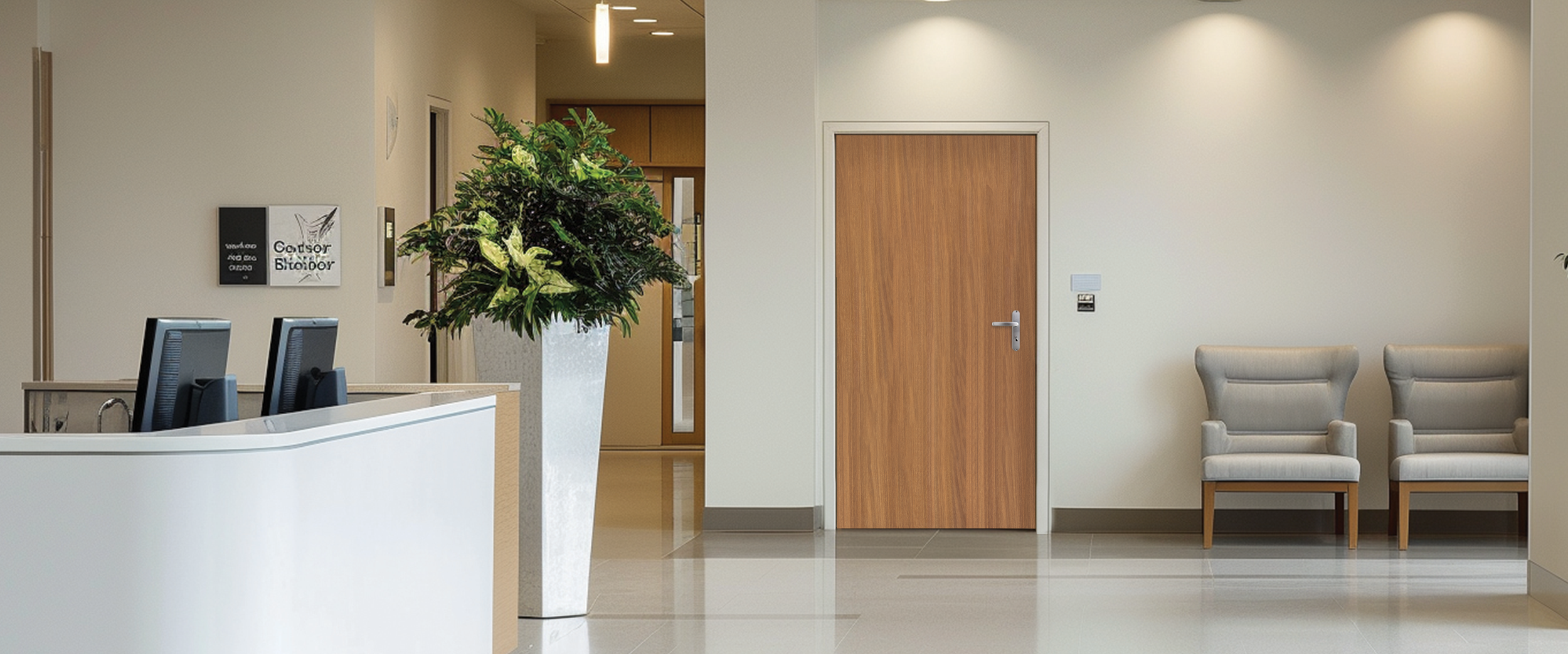
The Science of Acoustics & Its Impact on Wellness
Why Sound Matters More Than You Think
When we think about indoor environmental quality, we often prioritize lighting, air quality, or temperature. But there’s another critical factor shaping the way people experience a space: sound. In hospitals, schools, offices, and hotels, noise isn’t just distracting — it can affect comfort, performance, and even health.
How Sound Moves Through Buildings
Sound travels in two key ways:
Airborne sound (talking, phones ringing, traffic)
Structure-borne sound (footsteps, machinery vibrations, HVAC systems)
Each type requires different mitigation techniques, making acoustics a multi-layered design consideration. That’s where wall assemblies, ceilings, floors — and yes, door systems — come into play.
Know Your Acoustical Metrics
Designing for sound starts with understanding the terminology:
Decibels (dB): The unit used to measure sound volume.
Frequency (Hz): How high or low a sound is.
dBA: A decibel scale adjusted to human hearing sensitivity.
STC (Sound Transmission Class): The number used to rate how well a wall or door blocks sound.
Transmission Loss: The measurable sound reduction from one side of a partition to the other.
What the Standards Say
Leading building programs like LEED and WELL have recognized acoustics as a pillar of occupant health. They promote sound isolation, controlled background noise, and reduced reverberation. Voluntary standards from ANSI and IBC also offer detailed guidelines that architects can use to create quieter, more comfortable spaces.
Closing Thoughts
Sound plays a much larger role in nonresidential design than many realize. Whether it’s supporting patient recovery, improving student focus, or creating more productive office environments, good acoustics contribute to better outcomes. By understanding the science behind how sound travels — and the standards that guide acoustic design — architects and designers can make more informed decisions about materials and assemblies. And with doors playing such a critical role in every partition, specifying complete STC-rated systems becomes an essential part of building healthier, quieter spaces.